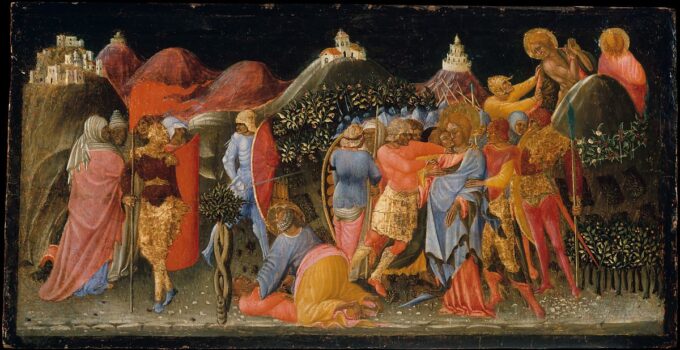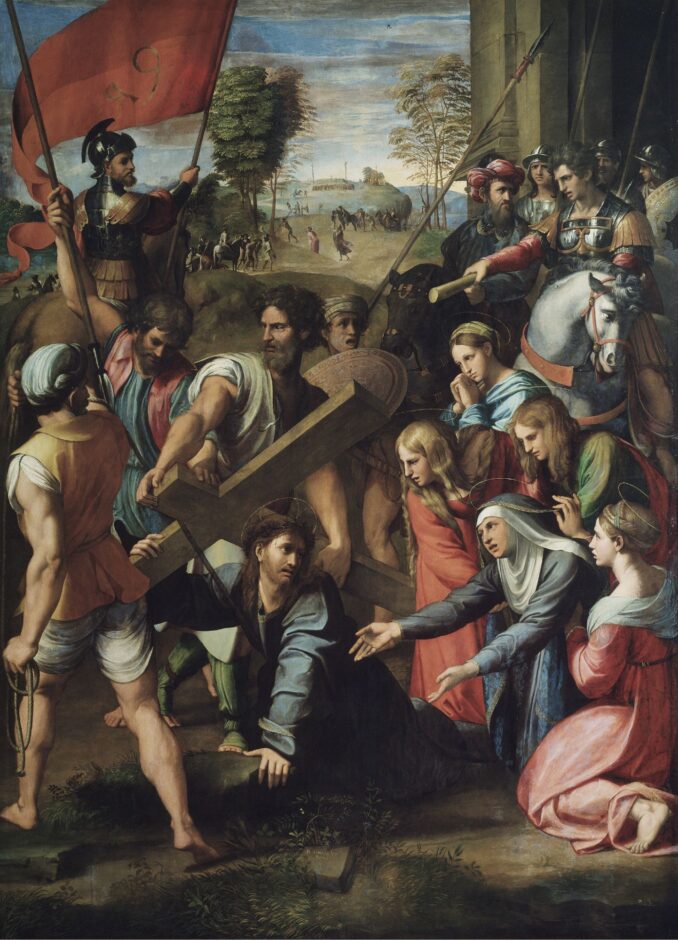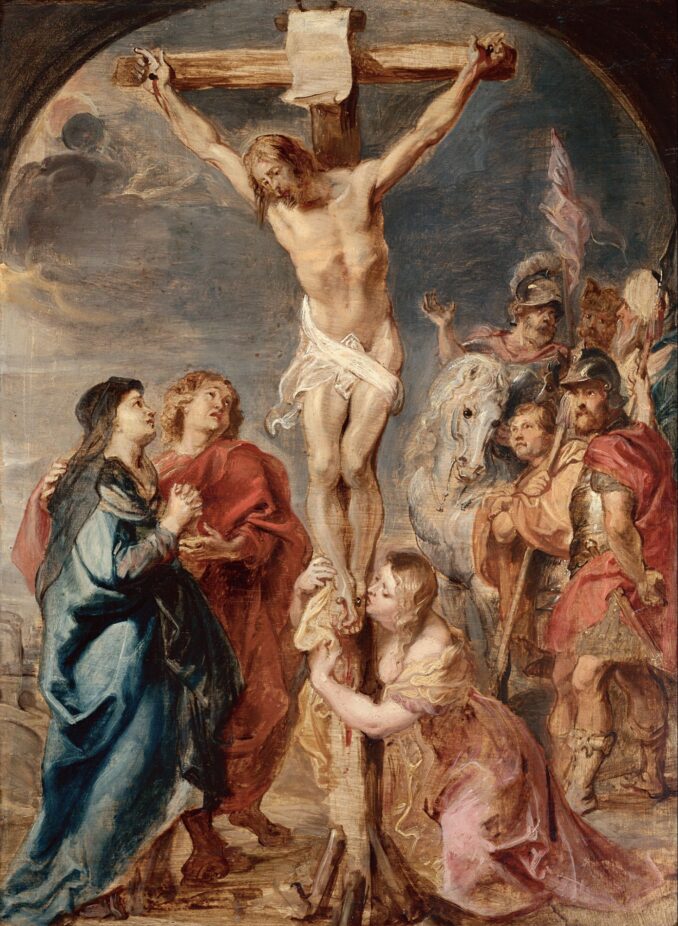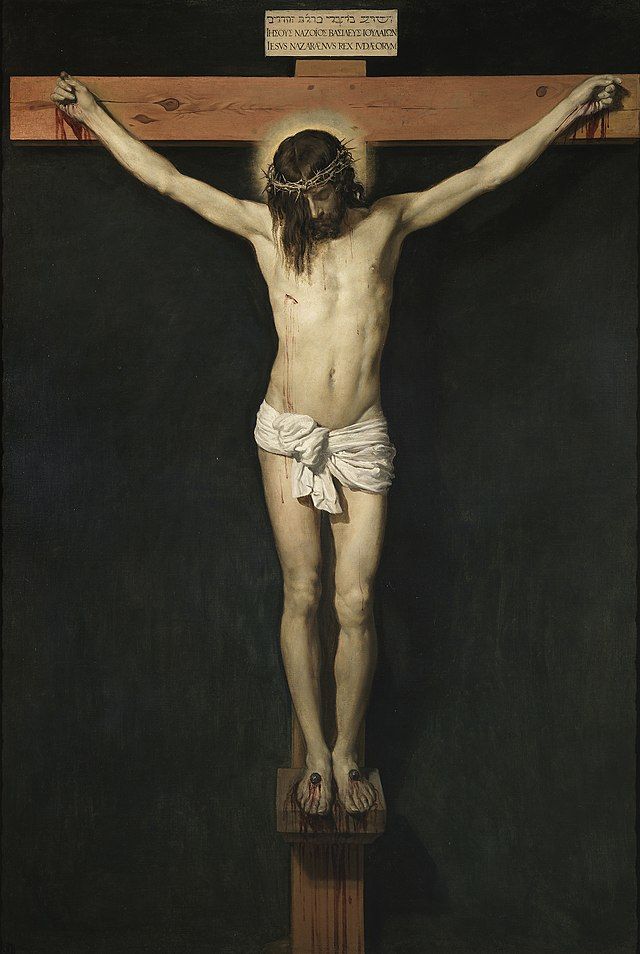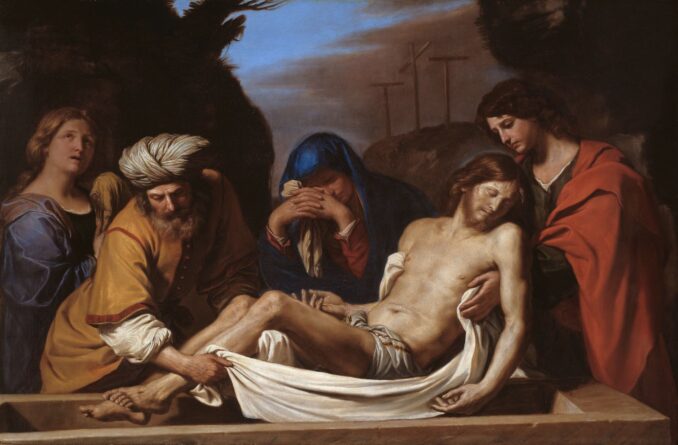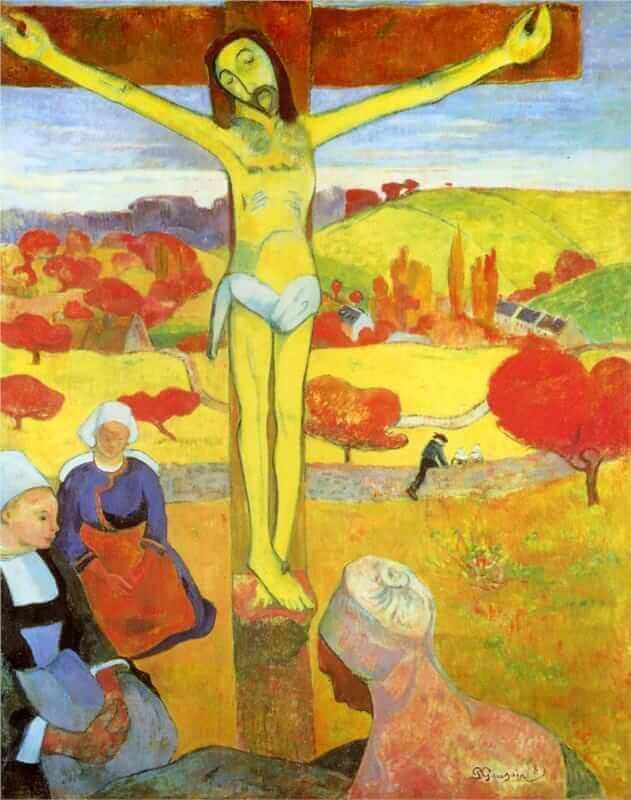The image of the crucifixion of Jesus Christ is one of the most famous pictures in all of history, let alone the history of art. The Crucifixion of Jesus and the crucifix itself are arguably one of the most important and profound symbols in the entire doctrine of Christianity.
In the history of art, the story of the crucifixion has always played a significant role, as many famous artists were inspired to bring the dramatic and tragic scene to life. As a matter of fact, paintings of Jesus on the cross are regarded as some of the most important and prolific works of art ever created.
To Christians and anyone else who may be interested in the fables of Jesus, the crucifix represents divine qualities such as unwavering faith and forgiveness. The following article takes a look at the story of the crucifixion, the symbols behind it, and the incredibly talented artists who brought them to life with their marvelous crucifixion paintings.
Christ Falling On The Way To Calvary by Raphael
In Christianity, there is an important term known as the stations of the cross. This refers to the various stages of suffering and humiliation Christ endured during the events of his crucifixion. Divided into 14 sections, each one marks a pivotal moment in the story and can be said to be applied to everyday life.
The stations of the cross are said to be a spiritual pilgrimage that every person will go through during their life here on earth. They are signified as an example of how to react to the harsh events of life, as well as acts of repentance and atonement for one’s sins.
The stations of the cross are also more commonly known as the Passion of Christ. In Italian master painter Raphael’s painting, the emphasis is on the moment when Christ falls in front of his mother, causing her great emotional pain. This relationship of the child’s actions deeply affecting the mother is something everyone can fundamentally relate to.
Christ On The Cross by Peter Paul Rubens
If you are looking for arguably the most famous painter of biblical iconography, look no further than Flemish Baroque painter Peter Paul Rubens. Rubens dedicated much of his artwork to his religion, which consists of an extensive collection of crucifix art and Jesus on the cross paintings.
Christ On The Cross is among his very best work on the subject of the crucifixion and beautifully brings to life both the horror Jesus went through and, at the same time, the grace and redemption he achieved by forgiving his persecutors and taking their sins on as his responsibility.
In this marvelous crucifixion painting, Christ is uniquely depicted alongside the two other criminals being crucified. The color and realism of this masterpiece lend themselves to the idea of the story of Jesus being supernatural, and this vibrant color palette is a consistent theme in Ruben’s artwork.
Christ Crucified by Diego Velasquez
Spanish Baroque painter Diego Velasquez is one of the most prolific crucifixion painters of all time. Both their iconic imagery and historical significance coincide in Velazquez’s Jesus on the cross paintings being the ones that everybody thinks of when thinking of the subject.
Diego’s crucifixion art brilliantly showcases the message and meaning that Jesus on the cross is supposed to represent. His painting of Christ Crucified is the most iconic crucifixion image and depicts Jesus all alone on the cross, surrounded by darkness.
This dark theme highlights the idea that suffering at its core is a totally personal affair, and when a person is suffering, they do so alone. What the story of Christ on the cross shows, however, is that no matter how bad things are or how lonely you feel, there is always room for acceptance and forgiveness.
The Entombment by Guercino
When most people think of the crucifixion, they think of the last moments of Christ on the cross; however, the story is much more detailed than this and touches on the universal religious ideas of birth, death, and rebirth.
In Guercino’s crucifixion painting, the artist focuses not on the events of the crucifixion itself but rather on the aftermath. Many religious artists have focused on this particular aspect of the story for both its emotional context and deeper spiritual meaning.
Guercino’s painting has the cross lingering ominously in the background as a symbol of regret and repentance while Jesus is being taken care of in the foreground. The Entombment can also be seen as the final station of the cross, bringing the sequence to an end.
The Yellow Christ by Paul Gaugin
Paul Gauguin’s painting of Jesus on the cross might just be the most bizarre and outlandish depiction of them all. Its bright aesthetic and sheer randomness make it one of the most memorable of all crucifixion art.
Gauguin’s painting is a contradiction of sorts. On the one hand, it is crudely simple and childlike, falling firmly in the genre of Primitivism. On the other hand, the highly advanced concept and themes depicted perfectly personify the emotion behind Christ’s crucifixion and what it can represent in our everyday lives.
Paul Gauguin’s Yellow Christ also shows that there is still a place for meaningful religious iconography in today’s modern world. The painting is regarded as both one of Gauguin’s greatest, as well as one of the great Christ on the cross paintings. There is still a somewhat popular genre of painting the crucifixion to this day, and this is thanks in part to Gauguin.
Conclusion
Crucifixion paintings have been and will always be one of the most iconic and important images on the planet. Its deep and profound meaning helped shape European culture for the last thousand years and continues to be a powerful tool for anybody looking to practice self-improvement and live a balanced life.


